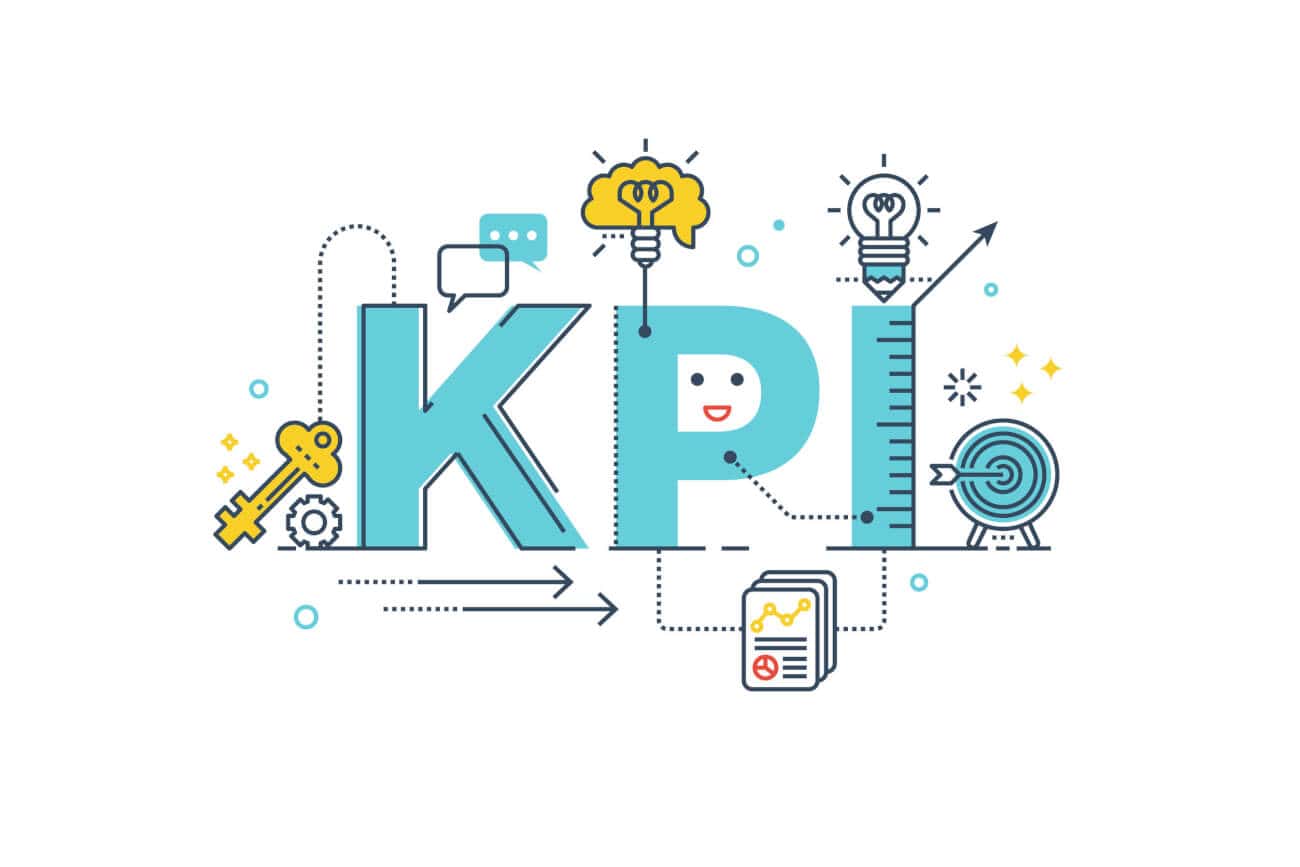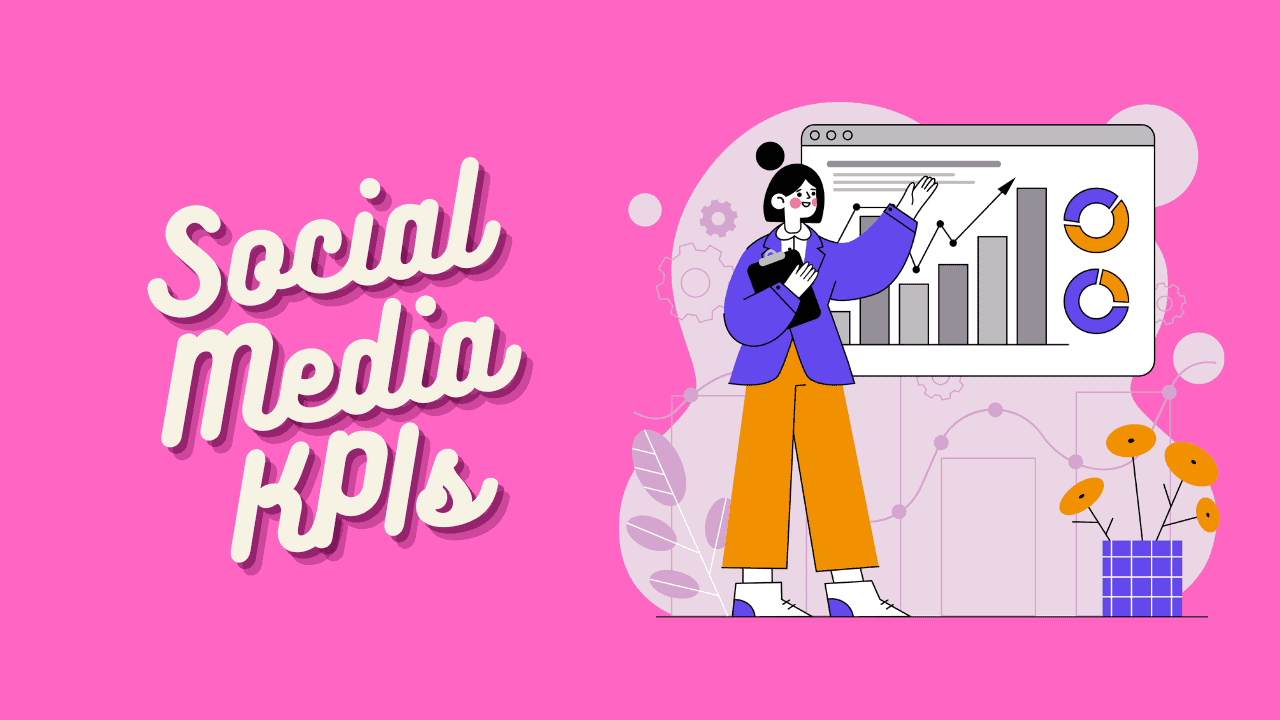Curious if your social media strategy is truly effective for your business? Social media KPI offer a dependable way to measure and validate your campaign’s success. KPI serve as preset goals, helping you monitor your progress. By assessing metrics such as engagement, follower growth, and conversions, you obtain evidence that your social media strategy resonates with your target audience, boosts brand visibility, and drives business ROI. Moreover, you’ll have a simple means to demonstrate the value of your efforts to your superiors. Let’s delve into the essential social media KPI, their optimal tracking times, and the insights they provide about your social media initiatives.
What are Social Media KPI?

Businesses employ KPIs to assess performance trends, evaluate goal achievement, and decide if strategic adjustments are necessary.
Social media KPI comprise the metrics used to gauge the effectiveness of a business’s social media marketing strategy. Essentially, they represent tracked data concerning a company’s presence on specific platforms like Facebook, X (formerly Twitter), or Instagram, or encompass all social platforms collectively.
Chances are, your social team sets SMART social media goals. Your social media KPI should also adhere to the SMART framework:
- Specific: Be crystal clear. For instance, do you aim to boost the brand’s Facebook followers by 500 within the next month? Is your goal a 20% increase in click-through rates by year-end?
- Measurable: Can you track and quantify your progress? Monthly check-ins should reveal how close you are to reaching the goal.
- Attainable: Keep it realistic. Set KPIs that fall within an achievable scope.
- Relevant: Ensure each social media KPI aligns with the broader business objectives.
- Timely: What’s the timeframe for accomplishing this goal and assessing success? Is it one month, six months, or one year?
SMART KPIs facilitate commitment to your goals, enabling your team to work consistently toward them. Moreover, they simplify reporting successes to your superiors, making progress and victories easily discernible!
How to set Social Media KPI
Begin by thinking about what you want to achieve with your social media. Do you want more people to know about your brand, get more visitors to your website, or increase your sales?
Once you have your main goal, you can break it down into smaller goals. For example, if you want to get more visitors to your website, one of your smaller goals might be to see how many people click on your social media posts to go to your site.
Remember, your business goals can change, and so can the goals you set for your social media.
Here are some steps to help you set and keep an eye on your social media goals:
1. Explain why the goal is important
Think about how keeping an eye on this goal will help your business. Don’t just think about numbers; think about how the numbers relate to your business and your plan.
2. Give the goal a name
Once you know how your goal helps your business, pick a name for it. This name should be clear and easy to understand. If your business wants to grow and you want more people to know about you on social media, you might name your goal “Facebook Likes.”
3. Tell others about your goal
Share your goals with your team and others who need to know. This helps everyone know what you’re trying to do and why.
4. Look at how you’re doing now
If you haven’t tracked your goals before, start by finding out where you are now. This gives you a starting point. It’s like marking your height on a wall to see if you grow taller.
5. Learn from others
See what other businesses like yours are doing. This can help you set realistic goals. It’s like looking at what other students in your class are doing to see how well you’re doing.
6. Decide how often you’ll check your goal
Will you check your goals every week, every month, or every two months? Pick a schedule that works for you and helps you see how things are changing.
7. Review your goals
Take time once or twice a year to look at your goals. Are they still important? Are they helping your business? Do you need to make changes?
Remember, your reasons for setting social media goals and how you set them might change as your business changes.
Important Social Media KPI
Choosing the right social media KPIs can be challenging. There are KPIs for reach, engagement, and conversions, and each platform—Facebook, Instagram, X (formerly Twitter), YouTube, TikTok, and more—has its own set of KPIs.
To simplify tracking, start with the basics. Here’s a brief overview of essential social media KPI examples for measuring success.
Reach KPIs
Reach KPIs gauge the number of users exposed to your social media channels. These users may interact passively, as reach and engagement differ.
Think of reach as a quantity measure—it reveals your existing and potential audience, growth trends, and brand visibility.
- Impressions: The times your post appeared in someone’s feed or timeline. It doesn’t guarantee the viewer noticed or read it.
- Follower count: Your channel’s followers at a specific time.
- Audience growth rate: Ensure your follower count grows over time. This rate shows changes in your follower count.
- Reach: The number of people who saw a post since it went live. Reach varies based on audience activity and content quality, reflecting audience interests.
- Potential reach: Measures the potential post exposure during a reporting period. For instance, if a follower shares your post with their network, 2-5% of their followers contribute to potential reach.
- Website traffic: Tracks how many visitors come to your website from social media platforms.
Social media engagement KPIs
Engagement KPIs evaluate the interactions’ quality with your social followers. They reveal whether your audience connects with your content and brand.
Here are key engagement KPIs to monitor.
- Likes: Counts user interactions through the Like button within a social platform.
- Comments: Tallies user comments on your posts. Comments can be positive or negative, so a high count isn’t always ideal
- Clicks: Measures link clicks within your post, tracking engagement beyond the social platform.
- Shares: Indicates post shares across platforms, gauging content’s virality.
- Mentions: Identifies when your brand is tagged on social platforms—whether in posts, comments, Stories, or profile bios. This demonstrates active support and fosters follower relationships.”


